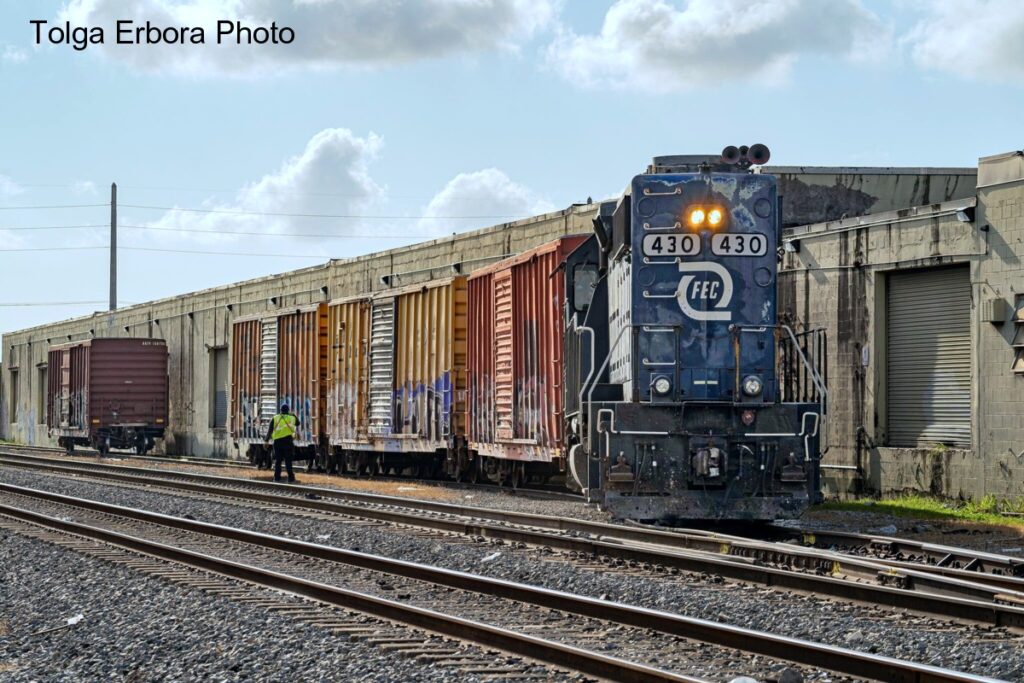
This is railroading and it’s happening now. Tolga Erbora caught FEC’s CIS local down in the dirt and earning revenue as it works OMNI Transload, a logistics warehouse in Miami.
Subject: Model Railroad Layout Design Service
It was over a decade ago when I sat in on a seminar at Cocoa Beach presented by the late TJ Bissett, a CSX conductor. The subject of the talk was switching logistics warehouses, Saddle Creek to be specific. The talk was fascinating and I could see right away that the subject had major layout design implications from the standpoint of creating challenging and plausible operating scenarios in the smallest of spaces. From a design standpoint they are “free money”. Let’s take at a look at these fascinating facilities as well as how to incorporate them into a layout design.
From the outside a logistics warehouse looks like a single industry, a nondescript “box”. It’s not. These facilities are leased out to a variety of small tenants that want rail service but can’t justify having their own spur. What looks like a building with eight or nine cargo doors is actually four, five, six, (or more) totally independent industries. As such they take a variety of car types ranging from standard boxes, Hi Cubes, standard reefers, block-out-the-sun massive reefers, and tank cars of all varieties. (Note: Tolga wrote me later to add, “The OMNI airport location also has handled flatcars with steel beams and centerbeam flats with forklifts being able to unload on the asphalt to the east side or I believe on a small easement on both sides.”)
Operationally they are a gift from gods. When a local arrives on the scene, cars needed to be spotted at specific doors. The food service industry is going to be pretty pissed if they open the cargo door and see a box of lumber spotted there! Further complicating things (or making it more interesting) is that when the local comes on the scene some of the cars on site may not have been unloaded yet. That means they need to be moved out of the way, the new loads spotted, and then the yet-to-be unloaded cars put back.
The nature of the warehouses is such that they could be easily modeled with a relatively flat structure. Even a model with four or five doors could take thirty to forty-five minutes to switch….and that’s a layout design opportunity!
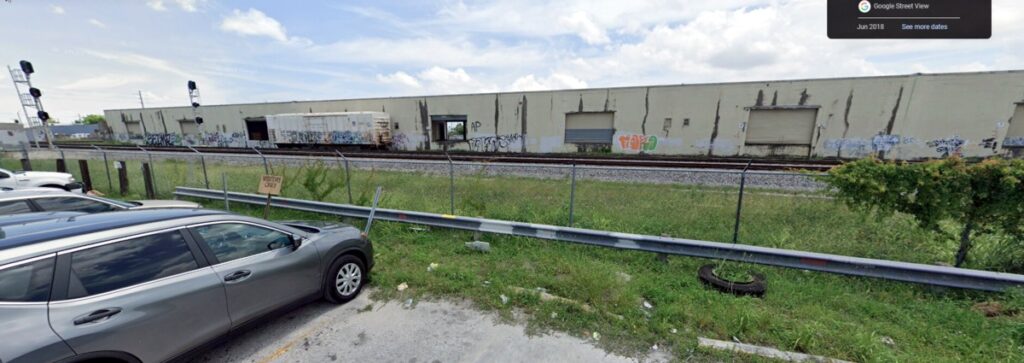
A reefer sits in front of OMNI transload in Miami. Note that on most days not every single door has a car in front of it.
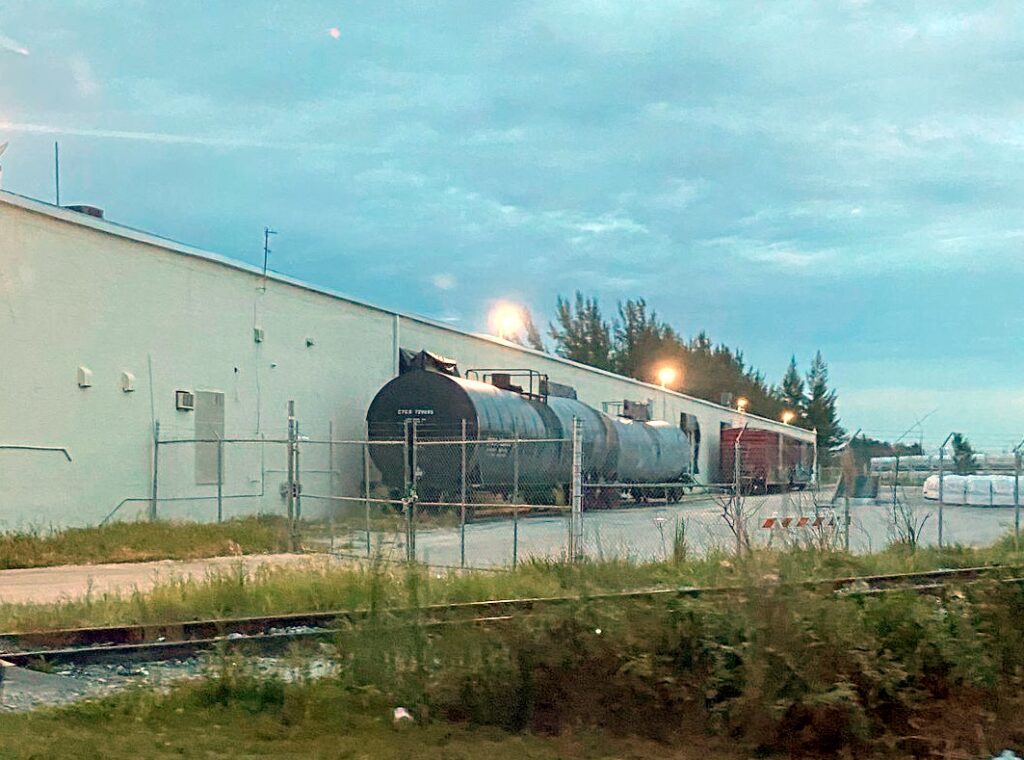
Tolga Erbora got this rare catch in front of OMNI a few days ago. We aren’t exactly sure what the contents of the tanks are since the placards would indicate it’s not food related. So, here we have some variety, tanks and boxcars.
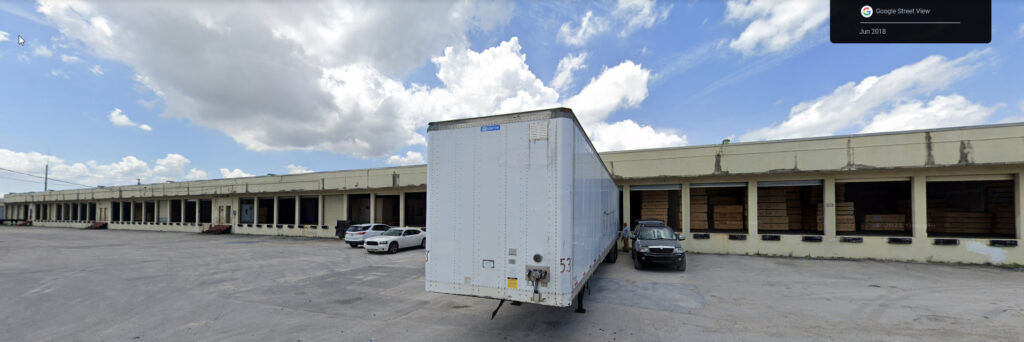
OMNI transload from street side. Note the pallets of lumber which came in on boxcars.
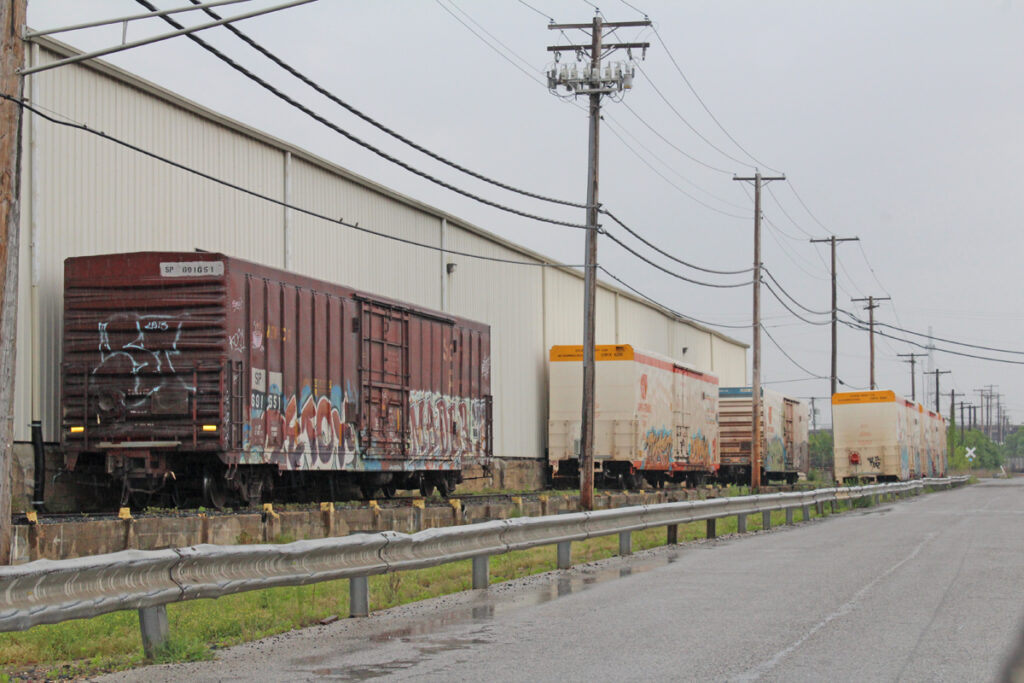
The Cryo-Trans reefers spotted in front of this logistics warehouse in Baltimore likely contain wine. Not visible is a sorting track just behind the guard rail. Note the boxcar for a different tenant. What’s going on with the three extra reefers on the sorting track? Those are “offspots” . When they came in, the reefers at the door were still being unloaded and were in the way. When they’ve been dealt with, the local will pull them and put the offspots in place to be unloaded.
The Design
A well thought out design covers a lot of bases. It should be interesting to look at when you’re not running trains and offer up a variety of building projects that are fun for the layout owner. It should be plausible. It should be straightforward to build. The plan shown here could be made operational within a weekend and is within reach of a high school student. It also offers plenty of meat for the more experience detailed modeler. If you used Atlas code 83 track the cost would be minimal. Using Atlas’ sectional track 24 inch curves would further simplify things. I’ve include photo wallpaper for the warehouse in the How To section of this site. The “negative space” section in the middle contains no spurs and creates a sense of distance between the yard and warehouse. There is more than enough going on with the plan that putting more track here serves no purpose other than to be an eyesore.
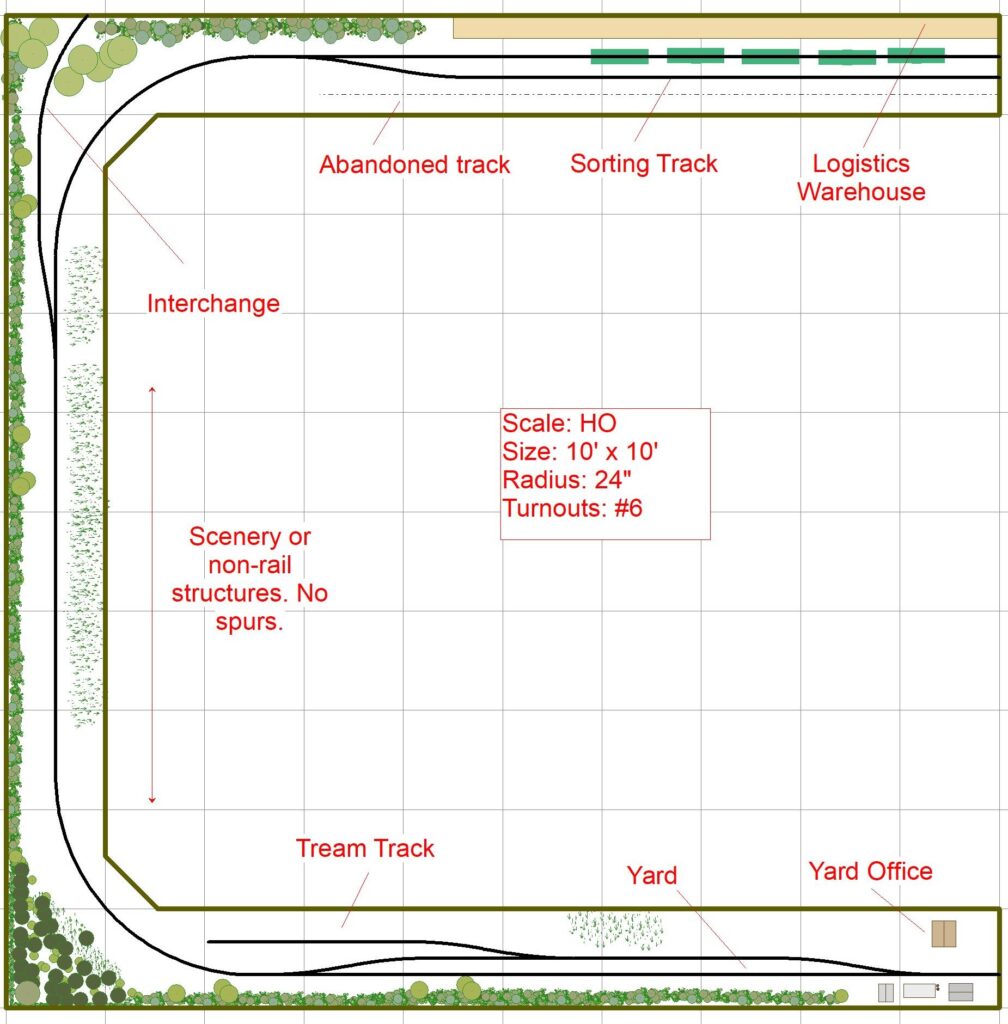
If you like this plan you might enjoy my latest book “8 Track Plans For Modern Era Switching Layouts”.
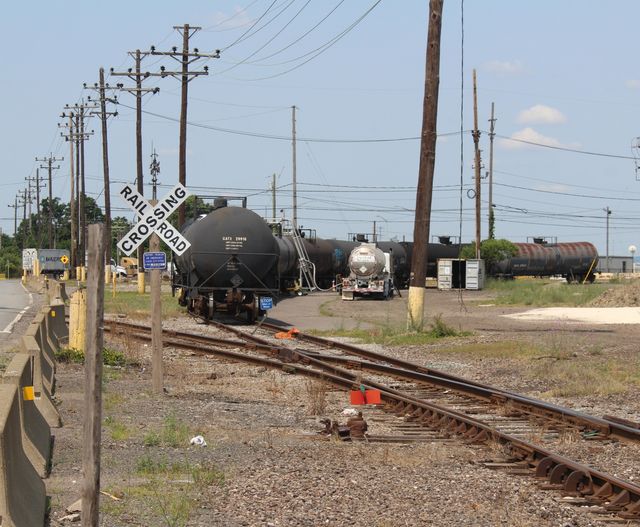
The team track at Tradepoint Atlantic in Baltimore. These take a variety of cars for customers that don’t have their own spur. The tanks in this shot are for an environmental services firm across town. They offer the chance to incorporate a broad variety of car types in a small space.